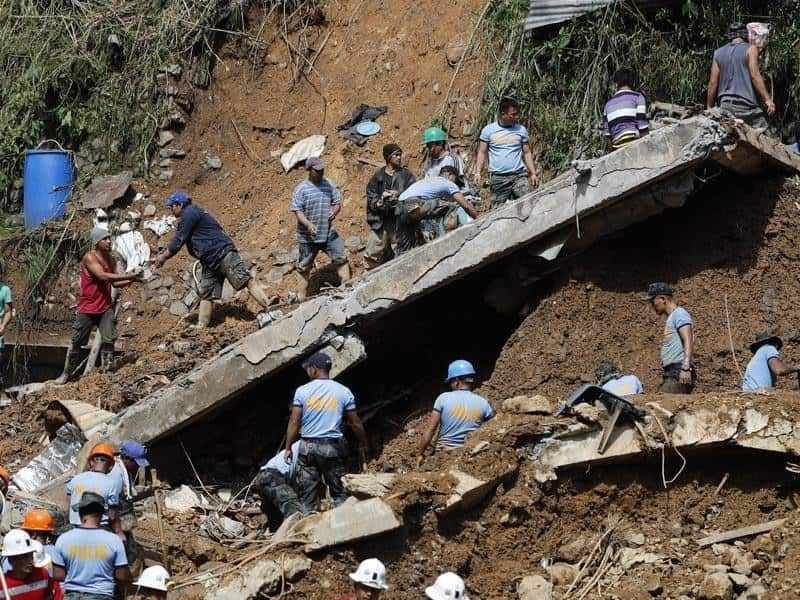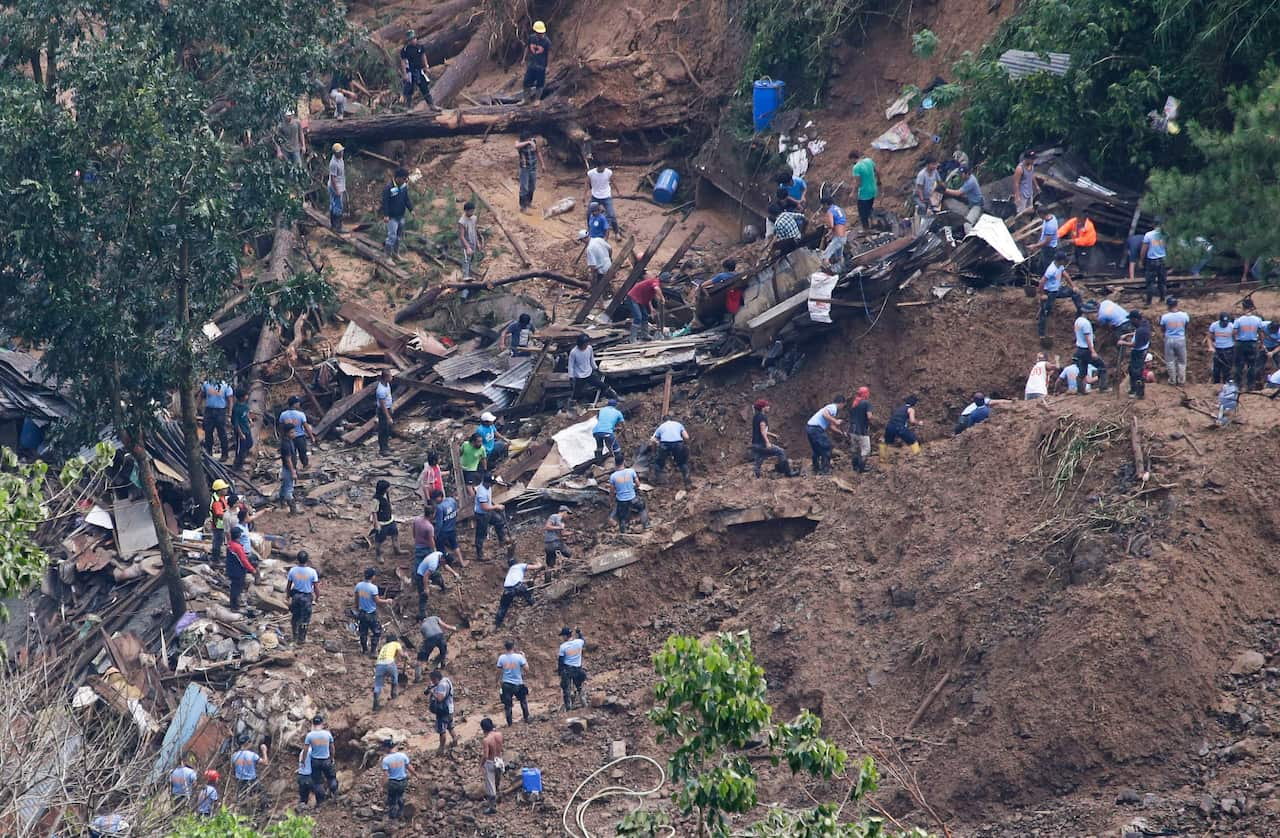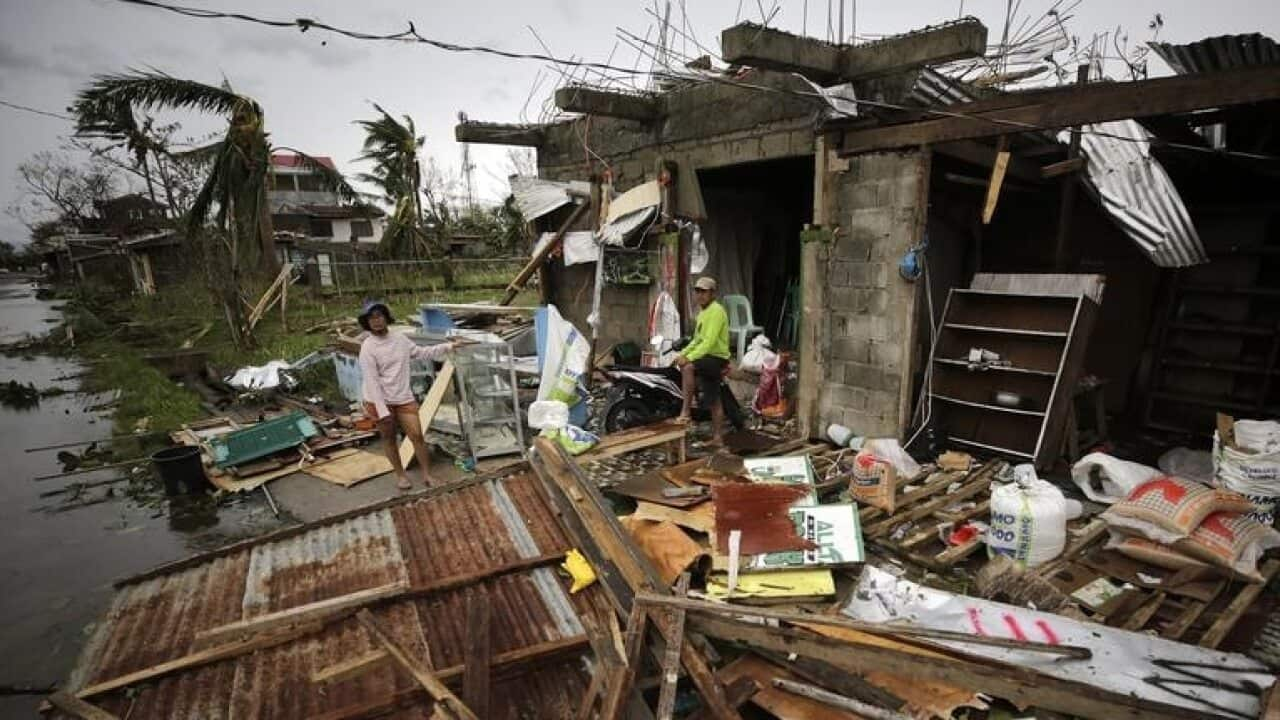Hopes of finding survivors in the rubble of a huge landslide in the Philippines have faded as rescuers in a remote mountainous region struggle to reach dozens of people feared trapped, two days after a powerful typhoon struck.
Some 300 police, soldiers, firefighters, and volunteers armed mostly with hand tools raced to remove rocks, mud, debris and drain water from collapsed buildings, hoping to find some signs of life after 12 bodies were pulled out.  The village of Ucab in the picturesque Cordillera region was hit by one of 50 landslides triggered by heavy rains brought by Typhoon Mangkhut, which tore across the northern tip of the Philippines early on Saturday, killing at least 54 people.
The village of Ucab in the picturesque Cordillera region was hit by one of 50 landslides triggered by heavy rains brought by Typhoon Mangkhut, which tore across the northern tip of the Philippines early on Saturday, killing at least 54 people.

Rescuers are digging in the Philippines town of Ucab for possible survivors of a large landslide. (AAP) Source: AAP
Only three people have been rescued in Ucab. Fifty-five were missing, six of them children. Many of the adults were in an abandoned bunkhouse, next to a chapel and home of a pastor and his family. The buildings were all crushed by earth and rocks.
"I am 99 per cent sure the people there are dead," said Victorio Palangdan, the municipal mayor. "We will continue until we get them all."
Rescuers used bare hands to remove roofing, slabs of concrete and planks of wood, standing side-by-side, passing debris along a line to a pile 30 metres away.
National Police Chief Oscar Albayalde in a Twitter message on Monday said elite police officers were being sent to Ucab with radar life detectors, harnesses, digging tools and other search and rescue equipment.
Friends and relatives joined lines of rescuers to remove debris, one rock at a time, as a handful of sniffer dogs searched for survivors.  The abandoned bunkhouse, owned by gold miner Benguet Corp , was near the site of a mine which was operating illegally, according to the Chamber of Mines of the Philippines.
The abandoned bunkhouse, owned by gold miner Benguet Corp , was near the site of a mine which was operating illegally, according to the Chamber of Mines of the Philippines.

Rescuers work on the site where victims were believed to have been buried by a landslide after Typhoon Mangkhut in the Philippines on Monday, Sept. 17, 2018. Source: AP
The chamber, of which Benguet Corp is a member, said mining operators in Ucab had been repeatedly told to leave the area because of the threat of landslides.
Environment and Natural Resources Secretary Roy Cimatu on Monday ordered the stoppage of all small-scale mining in the Cordillera region, where landslides had killed 24 people.
The typhoon affected about five million Filipinos altogether, 150,000 of whom were in evacuation centres when the storm hit, packing winds of over 205km/h, and gusts of as much as 305km/h.
Mangkhut destroyed rice and corn crops worth an estimated $US177 million ($A247 million) and damaged 450 homes, with flooding in nine provinces, official estimates showed. The human cost was far less than disaster officials had anticipated.
ALSO READ
Share


